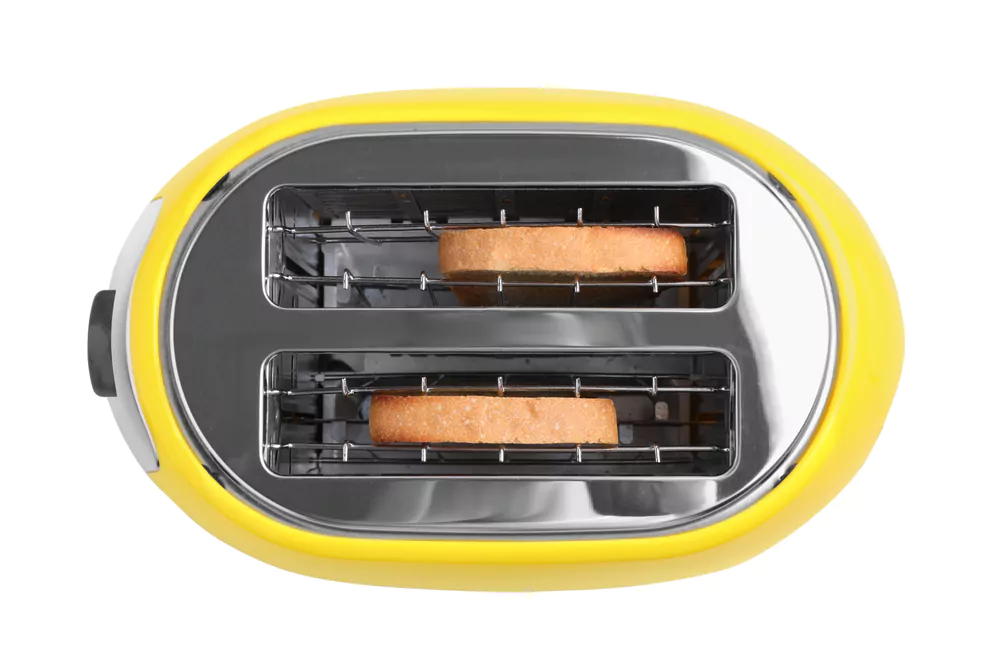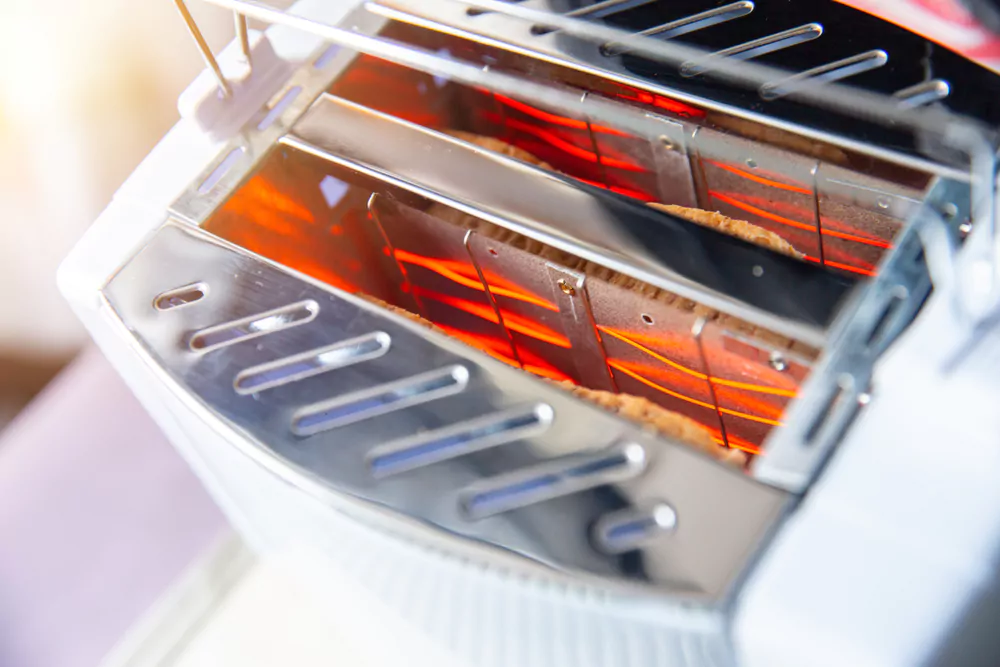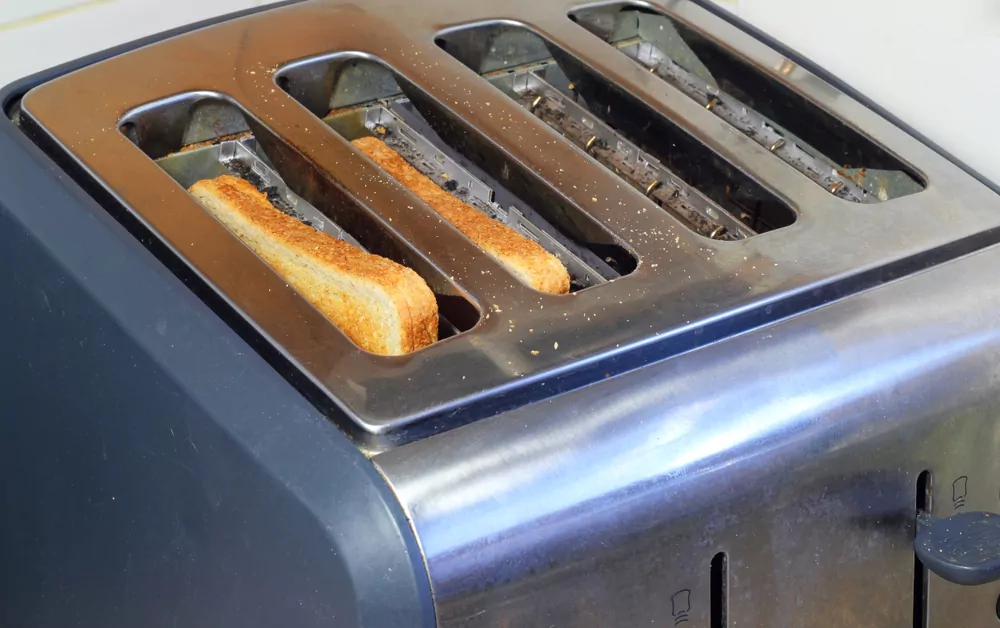Why Are Coils of Electric Toaster Made of Alloys?

A common kitchen appliance that most households have is an electric toaster. This device has become an essential tool for preparing a quick and easy breakfast, heating up bread and bagels, and even melting cheese on sandwiches. But have you ever stopped to wonder why are coils of electric toaster made of alloys? The answer lies in the unique properties of alloys that make them suitable for this application.
In this blog post, we will dive into the science behind electric toasters and explore why alloys are the preferred choice for toaster heating elements. We will cover topics such as the types of alloys used in toasters, their properties, and the benefits of using alloys over other materials.
- The Science Behind Toasters: How They Work?
- The Role of Electric Coils in Toasters
- Why are Coils of Electric Toaster Made of Alloys? Understanding the Basics
- Properties of Alloys Used in Electric Toaster Coils
- Benefits of Using Alloys in Electric Toaster Coils
- Common Alloys Used in Toaster Coils and Their Benefits
- The Future of Toaster Technology: Emerging Trends and Innovations
- Wrapping Up
1 The Science Behind Toasters: How They Work?
To understand why are coils of electric toaster made of alloys in some of the best toasters, it is important to first comprehend the basic science behind toaster operation. Toasters work on the principle of electrical resistance, which generates heat by converting electrical energy into thermal energy. When you plug your toaster in and set the desired browning level, an electrical current flows through the metallic coils or heating elements within the device. The coils offer a certain level of resistance to the current, which in turn generates heat.
As the coils heat up, they transfer this thermal energy to the surrounding air and the bread itself, causing the Maillard reaction to take place. This chemical reaction between the amino acids and reducing sugars in the bread gives it the characteristic brown colour, crisp texture, and appetising aroma we all know and love.
2 The Role of Electric Coils in Toasters
The electric coils, also known as heating elements, are the core component of a toaster responsible for generating the heat necessary to toast bread. These coils are made from a metal wire or ribbon that is tightly wound in a spiral or serpentine pattern. The wire’s resistance, in combination with the electrical current flowing through it, is what produces the heat required for toasting.
To ensure that the toaster operates efficiently and safely, the coils must have certain properties that allow them to withstand high temperatures and the repeated heating and cooling cycles experienced during regular use. This is where the use of alloys becomes essential.
3 Why are Coils of Electric Toaster Made of Alloys? Understanding the Basics

Before we delve into the reasons behind the use of alloys in toaster heating elements, it is essential to understand what an alloy is and why they possess unique properties. An alloy is a combination of two or more metals or a metal with a non-metal. The resulting material typically has improved mechanical, electrical, or thermal properties compared to the individual elements.
The heating element of an electric toaster is responsible for generating heat to toast the bread. It needs to have specific properties such as high electrical resistivity, high melting point, and excellent thermal conductivity to ensure efficient and consistent toasting.
Alloys, especially those containing metals like nickel, chromium, and iron, possess these desirable properties. The most common alloy used for toaster heating elements is Nichrome, an alloy of nickel and chromium. Other alloys, such as Kanthal (iron, chromium, and aluminium), are also used in some toasters.
4 Properties of Alloys Used in Electric Toaster Coils
High Electrical Resistivity
When electricity flows through the heating element, it encounters resistance, which generates heat. Alloys like Nichrome and Kanthal have high electrical resistivity, meaning they offer more resistance to the flow of electric current. This high resistance causes the heating element to heat up quickly and effectively toast the bread.
High Melting Point
The heating element in a toaster must withstand high temperatures without melting or deforming. Alloys used in toaster heating elements, such as Nichrome and Kanthal, have high melting points, ensuring they can handle the heat generated during toasting. For example, Nichrome has a melting point of around 1400°C (2552°F), while Kanthal has a melting point of around 1500°C (2732°F).
Excellent Thermal Conductivity
Good thermal conductivity is essential for a toaster heating element, as it allows for even heat distribution across the surface of the bread. Alloys used in toasters, like Nichrome and Kanthal, have excellent thermal conductivity, ensuring that the heat is distributed evenly throughout the coils and onto the bread.
Oxidation Resistance
When metals are exposed to high temperatures, they can react with oxygen in the air, leading to the formation of oxides. This process, known as oxidation, can cause the metal to degrade over time. Alloys like Nichrome and Kanthal have excellent oxidation resistance, meaning they do not degrade quickly when exposed to high temperatures and oxygen.
5 Benefits of Using Alloys in Electric Toaster Coils

Now that we understand the properties of the alloys used in electric toaster coils let’s discuss the benefits of using these materials over others:
Durability and Longevity
The unique properties of alloys like Nichrome and Kanthal ensure that they can withstand high temperatures without deforming or melting. This durability and resistance to high temperatures ensure that the heating elements in toasters last for a long time, providing consistent performance.
Energy Efficiency
Alloys with high electrical resistivity, like Nichrome and Kanthal, generate heat quickly and efficiently when electricity flows through them. This rapid heating reduces the time required to toast bread, ultimately saving energy. In addition, the excellent thermal conductivity of these alloys ensures even heat distribution, which prevents over- or under-toasting, further improving energy efficiency.
Consistent Toasting Performance
The high electrical resistivity and thermal conductivity of alloys used in toaster heating elements allow for consistent toasting performance. The even heat distribution ensures uniform browning of the bread, resulting in a perfectly toasted slice every time.
Resistance to Corrosion and Oxidation
Alloys like Nichrome and Kanthal have excellent corrosion resistance, making them suitable for use in the moist environment of a kitchen. Additionally, their resistance to oxidation ensures that they do not degrade quickly when exposed to high temperatures and oxygen, maintaining their performance and longevity.
Easy Maintenance
Since alloys used in toaster heating elements are resistant to oxidation and corrosion, they require little to no maintenance. This ease of maintenance ensures the toaster’s long-lasting performance and reduces the need for frequent replacements.
6 Common Alloys Used in Toaster Coils and Their Benefits
Now that we’ve explored why are coils of electric toaster made of alloys, let’s examine some of the most common alloys used in toaster coils and their specific advantages:
- Nichrome: Nichrome is an alloy made of nickel and chromium, with small amounts of iron and other elements. It is the most commonly used alloy for toaster coils due to its high electrical resistivity, excellent resistance to oxidation, and durability at high temperatures. Nichrome also has a low coefficient of thermal expansion, making it less prone to deformation during heating and cooling cycles.
- Kanthal: Kanthal is another popular alloy used in toaster coils, composed primarily of iron, chromium, and aluminium. It has a slightly higher electrical resistivity than Nichrome, making it even more efficient at generating heat. Kanthal is also highly resistant to oxidation and maintains its mechanical strength at high temperatures.
- Cupronickel: Cupronickel is an alloy consisting of copper and nickel, sometimes with small amounts of other elements. While it has a lower electrical resistivity than Nichrome or Kanthal, it offers excellent corrosion resistance and is sometimes used in toaster coils for applications where these properties are particularly important, such as in humid environments.
7 The Future of Toaster Technology: Emerging Trends and Innovations
As technology continues to advance, so too does our understanding of the materials and designs that can improve the performance and efficiency of everyday appliances like toasters. In the future, we may see the development of new alloys specifically engineered for toaster coil applications, offering even better performance and efficiency.
Additionally, innovations in toaster design, such as the use of smart sensors and microprocessors, may allow for more precise control of heating elements and further optimisation of the toasting process. These advancements could lead to even better toasting results and more energy-efficient appliances.
8 Wrapping Up
In conclusion, the question of why are coils of electric toaster made of alloys can be answered by examining the unique properties of these materials. Alloys like Nichrome and Kanthal have high electrical resistivity, high melting points, excellent thermal conductivity, and resistance to oxidation and corrosion, making them the perfect choice for toaster heating elements.
These alloys offer numerous benefits, such as durability, energy efficiency, consistent toasting performance, and easy maintenance. Therefore, next time you use your electric toaster, take a moment to appreciate the science behind the humble appliance and the incredible properties of the alloys that make it possible to enjoy a perfectly toasted slice of bread.
Community Q&A
About This Article
This article has been viewed 597 times.



